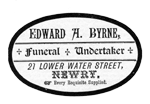Gregory
In very early languages Gregory (or other versions) have been found to mean “watchful” or “watchers”; so it’s possible that the name could have been given to some kind of fortress or palace guards. An early English translation indicates that it meant “Son of Gregory” or “Son of a Gregory”. However, the Latin form, Gregorius, came to be associated by folk etymology with grex, gregis, flock, herd, under the influence of the Christian image of the good shepherd. The Greek name was borne in the early Christian centuries by two fathers of the Orthodox Church, St. Gregory Nazianzene (c. 325-390) and St. Gregory of Nyssa (c. 331-395), and later by sixteen popes, starting with Gregory the Great (c. 540-604). It was also the name of 3rd- and 4th-century apostles of Armenia.Some other versions of the Gregory name are: Gregor, Greggor, Grigorey (Russian) and MacGregor (Scottish). The Gaelic form of the name was Mac Griogain, which translates as “son of Gregory”.

The principal Gregory family in Ireland came to Ireland in the Cromwellian period. The first of these to be noteworthy were Robert and George Gregory who were prominent in the defence of Derry during the siege of that city in 1689. After the siege the latter settled in Co. Kerry where the family remained until 1774. The small town of Caslegregory in Kerry is not, however, named after them but from the Christian name of one Gregory de Hora. This family of Gregory next migrated to Co. Galway: the Coole estate was acquired in 1768. Coole, of course, inseparably associated with the name of Lady Gregory (1852-1932) nee Augusta Persse, was famous as the country house frequented by all the well-known figures of the Irish literary revival. Her father-in-law Sir Robert Gregory (b. 1790) was Under Secretary for Ireland and her husband Sir William Gregory was M.P. for Co. Galway and Trustee of the National Gallery. Before them several other members of the family were notable, particularly Robert Gregory(1727-1810), who devoted much of the wealth he acquired while chairman of the East India company to the improvement of agriculture in Co. Galway. The name was not unknown in Ireland in earlier times: it appears as early as 1362 at Swords, Co. Dublin, and 1346 in the Ormond Deeds.
Starting in the 12th century and by the end of the 13th century most of the people of England, Ireland, Scotland and Wales had adopted the practice of adding a surname to their given names to distinguish individuals better. At first the names usually indicated either an occupation (Smith, Miller, Cook) or a location (Overhill, Brook, London) or from the father (John-son, William-son) or a characteristic (Lytle, Short, Small, Longfellow).



